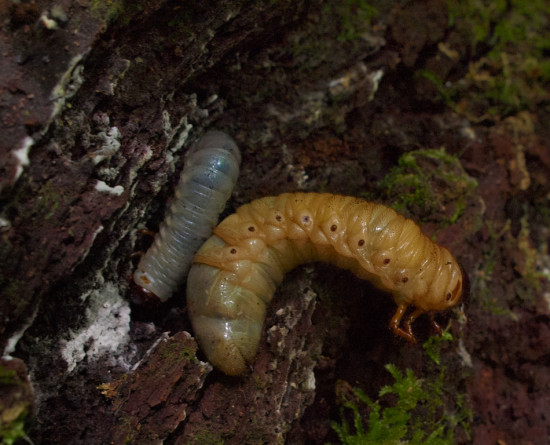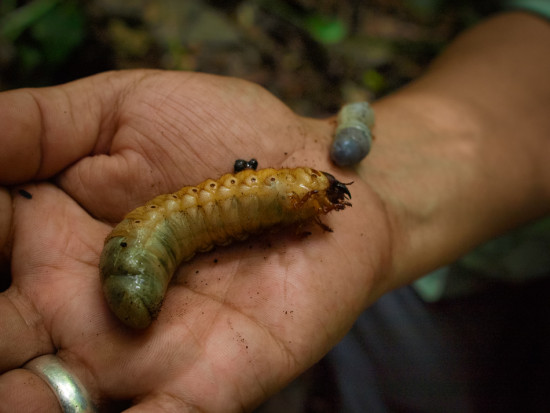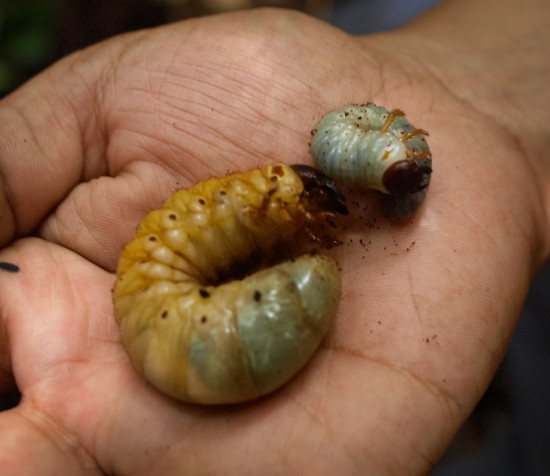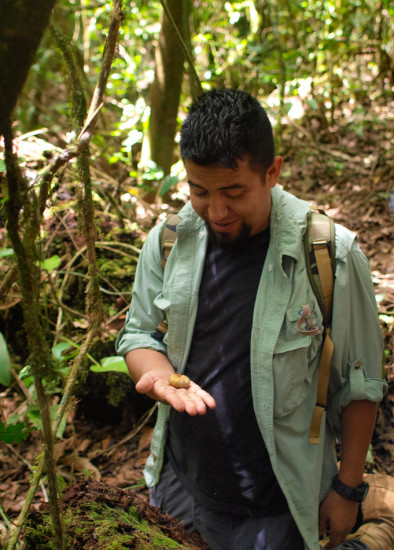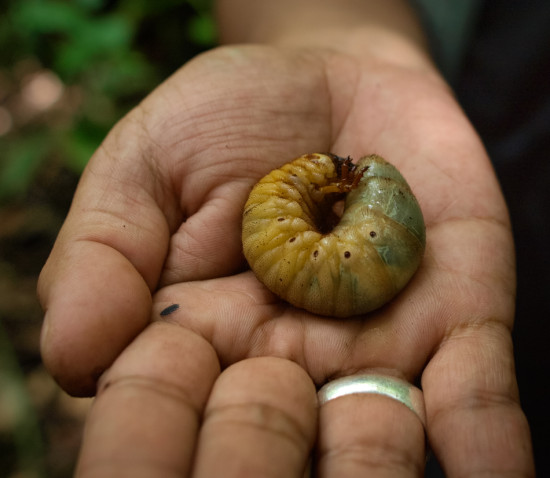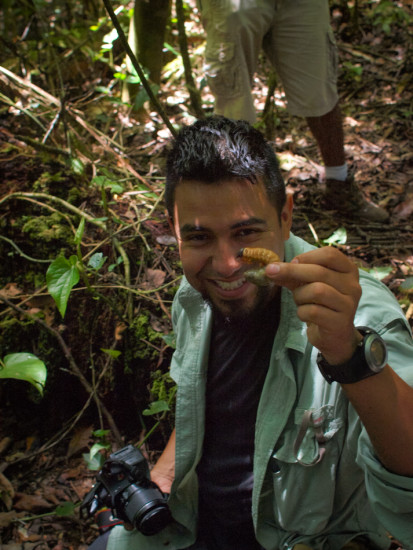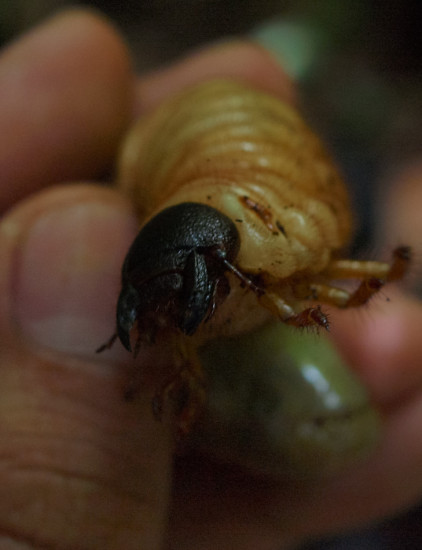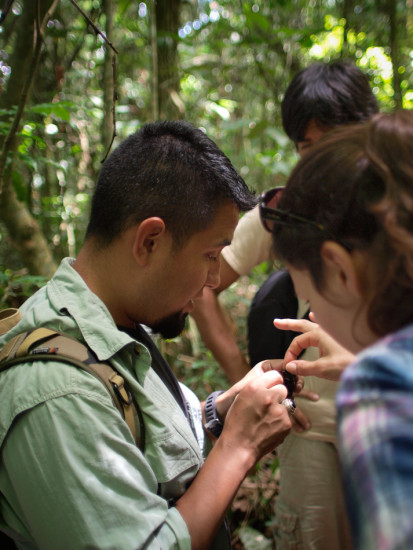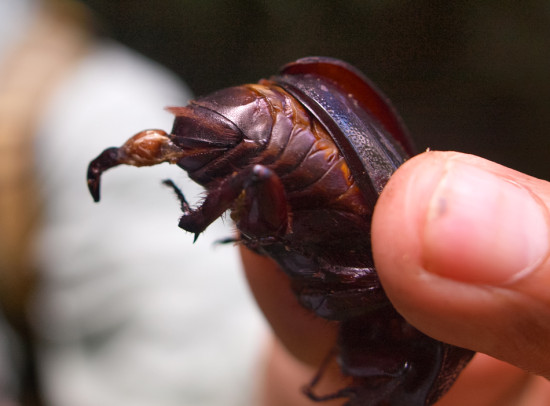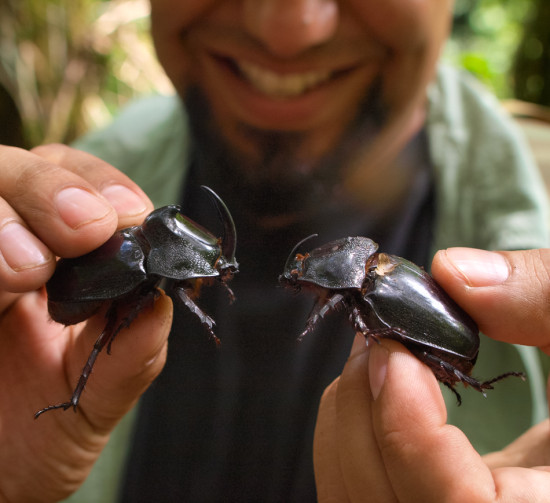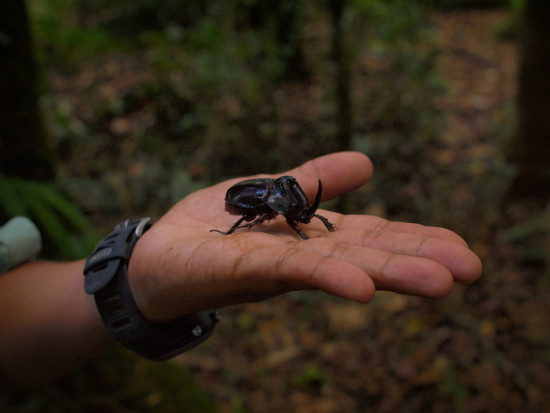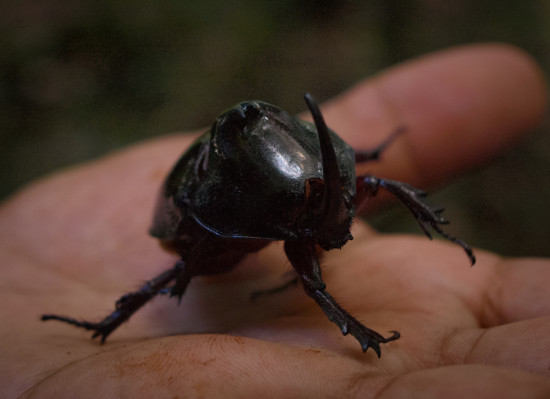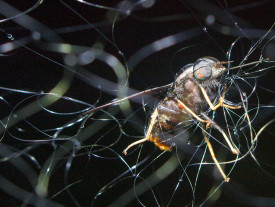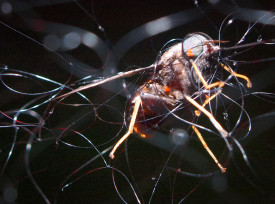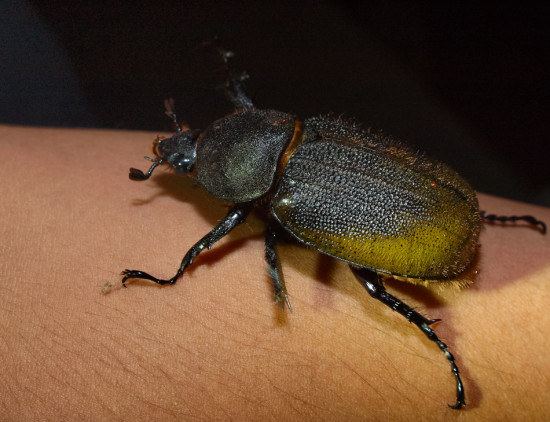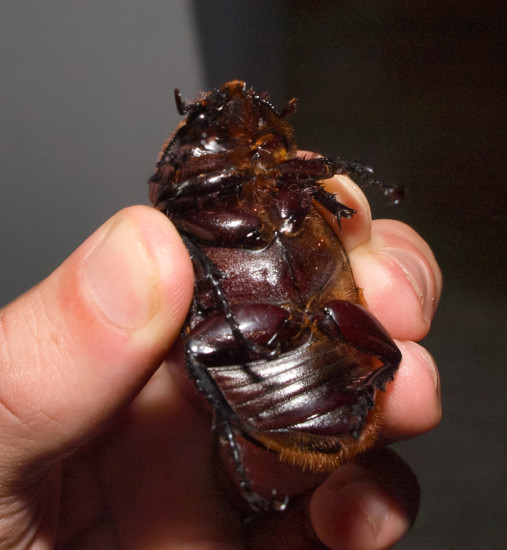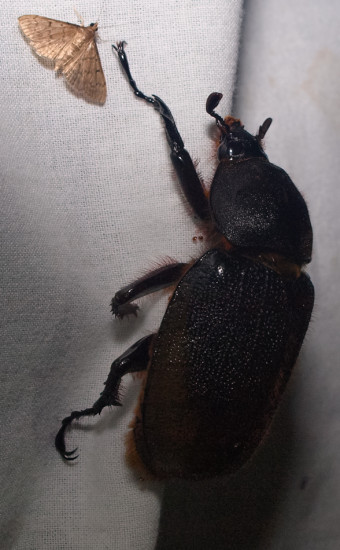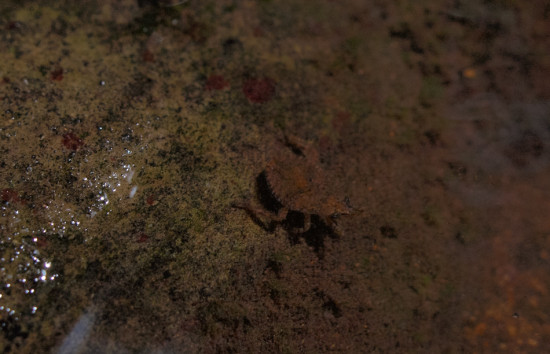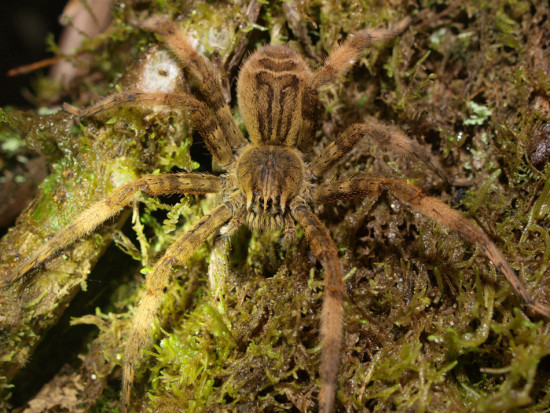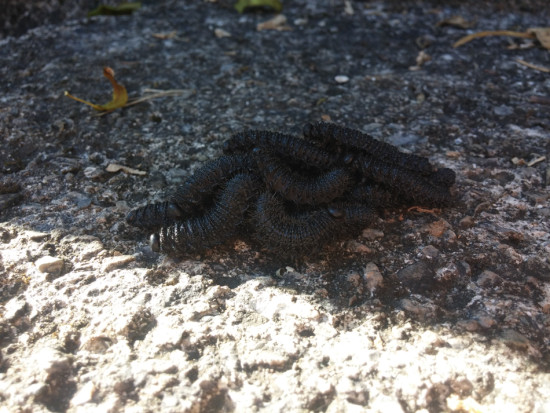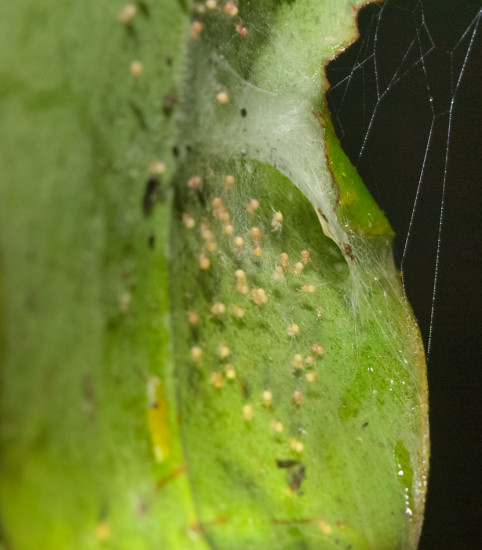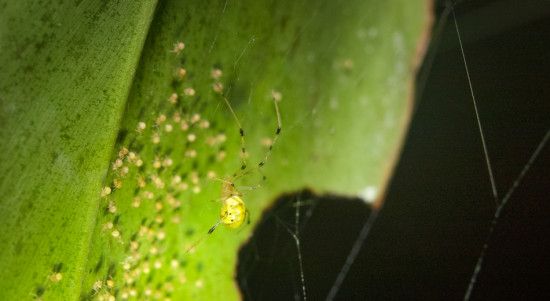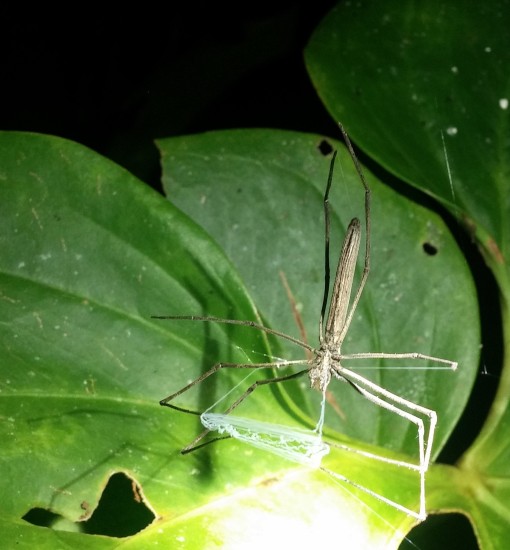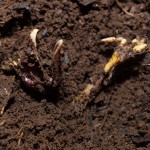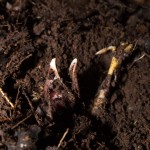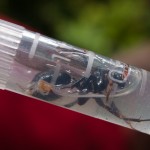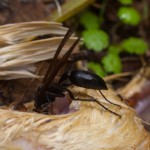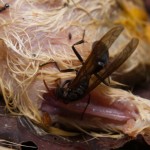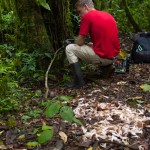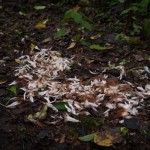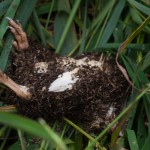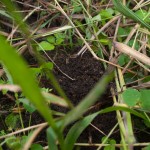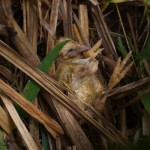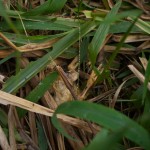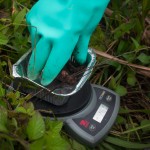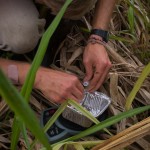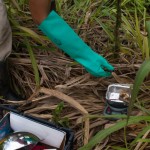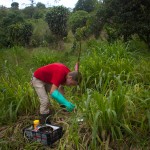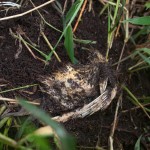Along a thin, elevationally-restricted band on the trails of Las Alturas, dead and dying male rhinoceros beetles lie in the leaf litter. These may be the males of the species posted here,
Tag Archives: Arthropods
Tabanid deer fly with mites
A Tabanidae deer fly captured by a mist net (set up for bats) as it buzzed around myself and other researchers at Las Alturas field station. Several small, red and orange mites have colonized the fly, including the fly’s compound eyes. It was somehow satisfying to see these possible parasites on the flies…as they are parasites of humans and other vertebrates.
Female rhinoceros beetle
A large female Rhinoceros beetle (Scarabaeidae), probably of subfamily dynastinae (courtesy of Cristian, our entomologist NAPIRE mentor this year) attracted by a black light at Las Cruces.
A juvenile water bug
A wandering spider
Travelling caterpillars
A spider and her spiderlings
Net-casting deinopid spider
Golden Silk Orb-weaver
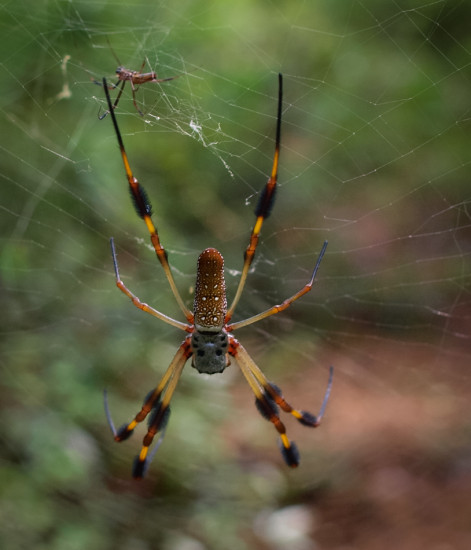 Literally ran into a few of these recently… here’s a large (probably about four inches or the size of your hand’s palm) female Nephila sp. (I’m guessing N. clavipes from Google searches of nearby orbweavers) and one of her hopeful mates. I counted three males associated with this web, and Wikipedia claims that these spiders are often parasitized by kleptoparastic Argyrodes spiders that steal captured prey from her web.
Literally ran into a few of these recently… here’s a large (probably about four inches or the size of your hand’s palm) female Nephila sp. (I’m guessing N. clavipes from Google searches of nearby orbweavers) and one of her hopeful mates. I counted three males associated with this web, and Wikipedia claims that these spiders are often parasitized by kleptoparastic Argyrodes spiders that steal captured prey from her web.
Investigating animal decomposition in a tropical wet forest and agricultural lands
Michael, an undergraduate researcher out of Stanford, is working at Las Cruces on animal decomposition. Briefly, he’s set out freshly-killed adult chickens and chicks in forests and agricultural lands (i.e., pasture and coffee plantation) and monitors what happens…
He’s got camera traps trained on the adult chickens, and uses transects through both habitat types to pair replicate locations with both major habitats. It’s interesting (and rather smelly) work: there are a number of specialist scavengers that feed on animal matter, and the roles animal detritus (feces + dead animal) play in communities is often overlooked in light of the overwhelming biomass that plants input into detrital pools in ecosystems. Michael has already found some exciting facilitation effects within the scavenger community.
Michael was kind enough to take me along on one of his sampling dates.

